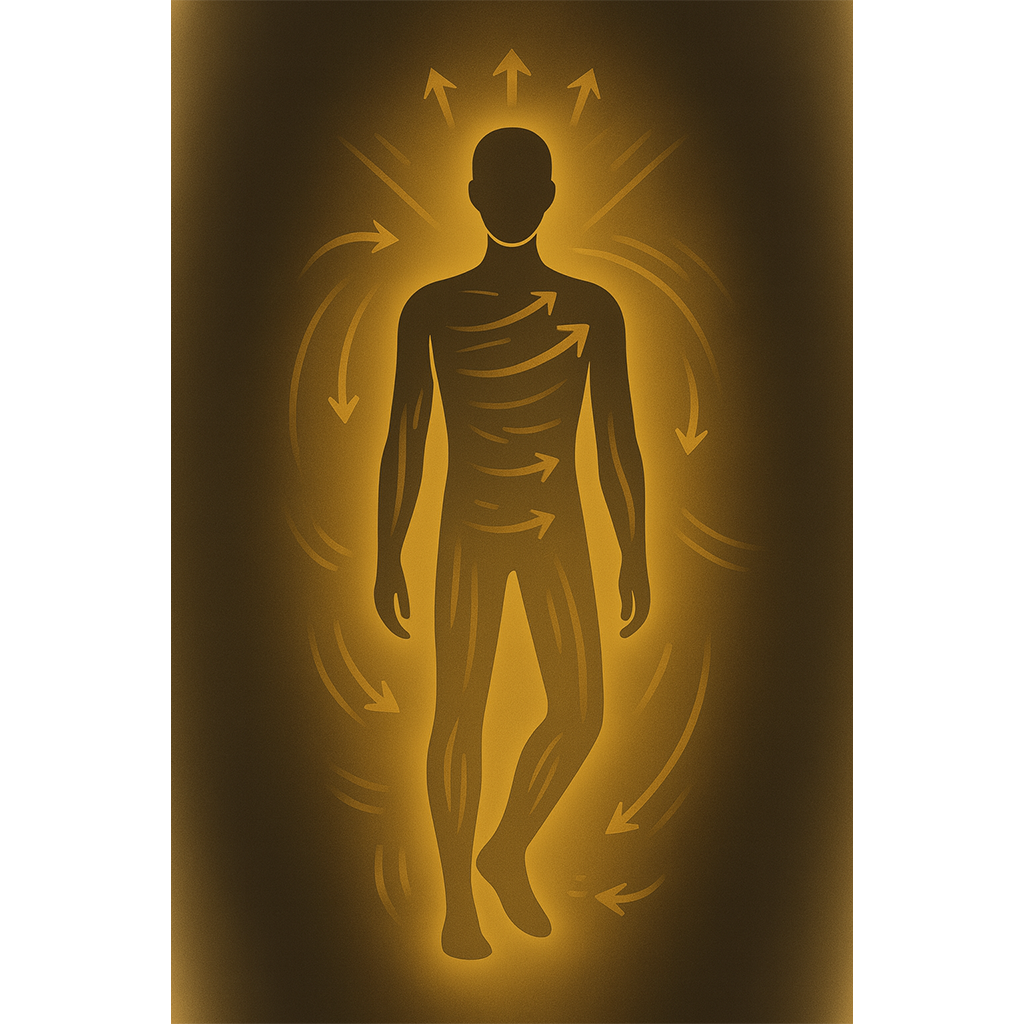NEAT (Non-Exercise Activity Thermogenesis)
Metabolism Energy balance Daily life
The “invisible” calories outside formal training: walking, standing, occupational and house work, postural work and fidgeting. A key factor for hardgainers, because high NEAT can quietly eat up a surplus.

Note
This page provides framing and orientation ranges. It is not medical advice and not an individual training or nutrition prescription. Suitability and tolerance need to be assessed individually.
Term and systems framing
In a nutshell NEAT covers all non-exercise movement across the day: steps and stairs, occupational and house work, postural work, gesturing and fidgeting. In TDEE, NEAT sits alongside BMR, EAT and TEF as a variable, often large component.
- Highly variable: between individuals and across weeks easily plus or minus 200–600 kcal per day.
- Context: higher NEAT ↑ → daily expenditure ↑ → surplus ↓ down to zero.
- Separation: NEAT is not cardio or endurance training (that is EAT).
For practical framing, use maintenance calories as your anchor; see also metabolism and BMR.
Measurement and operationalisation
NEAT is rarely measured directly; in practice it is inferred through steps and trends over 10–14 or more days.
- Steps as proxy: ten thousand steps are roughly 250–500 kcal (depending on body mass, pace and incline).
- Residual approach: NEAT ≈ TDEE − (BMR + EAT + TEF); TEF is roughly ten percent of intake.
- Trend over noise: weekly averages of body weight, calories and steps are used to calibrate maintenance.
Tracker calorie readouts are noisy; step counts are usually more robust. Season, occupation and travel can shift NEAT substantially. Combine tracking with the Hardgainer calorie calculator.
Steering in a gaining phase (guardrails)
- Step corridor: for example seven to nine thousand steps per day in gaining phases instead of “the more the better”.
- Intake coupling: repeatedly above ten thousand steps? Test an extra one hundred fifty to two hundred fifty kcal as NEAT buffer or bring steps back into the corridor.
- Couple to training: keep volume within MEV– MRV, steered via RIR/ RPE; respect the SRA model.
Validate gaining speed via Rate of Gain. If the curve flattens, check NEAT versus intake before increasing calories again.
Fourteen day practical orientation
- Day 0: estimate BMR, derive maintenance and define a step corridor.
- Daily: log morning body weight, steps, calories and training; work with weekly averages.
- Day 14: weekly average stable and steps high? Either add roughly one hundred fifty to two hundred fifty kcal or reduce steps back into the corridor.
NEAT – FAQ Short and practical
Q How many steps are “enough” in a gaining phase?
There is no magic number. In practice a corridor works well (for example seven to nine thousand steps per day in a gaining phase), so NEAT does not silently eat up your calorie surplus.
The key is consistency over ten to fourteen days: weight trend, weekly average steps and your maintenance calories. The Hardgainer calorie calculator helps to get the ballpark right.
Q Do I need to maximise NEAT during a diet?
Not necessarily. More important than “as high as possible” is a stable frame, so you can relate intake and expenditure in a meaningful way.
In a diet, a moderate increase in NEAT (more walking, deliberate steps) can help keep TDEE up. But if you jump from six thousand to sixteen thousand steps, planning quickly becomes messy.
Q I work a desk job – does low NEAT put me at a disadvantage?
A low NEAT mostly means that your baseline daily expenditure is lower. For muscle gain that can actually be an advantage, because fewer calories are “lost” before they reach training and adaptation.
A basic level of daily movement (for example five to seven thousand steps) is still a good idea, especially for health. The rest is handled through EAT, your training structure and a consistent nutrition setup.
Hardgainer calorie calculator
No guesswork: BMR → TDEE → goal and macros – precise, practical and hardgainer specific.
- BMR → TDEE: Mifflin–St. Jeor times activity factor
- HG boost: plus zero to fifteen percent for high NEAT/TEF
- Targets: maintenance, lean bulk (plus ten percent), aggressive (plus twenty percent)
- Macros (g/kg): adjustable protein and fat
- Carbs: from remaining calories automatically
- Meal split: three to six meals per day (P/F/C per meal)
- HUD/dashboard: target calories, intensity, pie stack
- Hydration target: roughly thirty five millilitres per kilogram
- Guides: pro tips and glossary integration
Orientation values only – fine tuning happens over ten to fourteen days of trends (body weight, steps, energy levels).
Common misunderstandings
- “Cardio kills gains.” Usually the issue is dose, timing and NEAT drift, not cardio itself.
- “More steps is always better.” In gaining phases, very high NEAT can blunt progress.
- “Calorie target is enough.” Without step counts and weight trends, you cannot see the real cause.
Deep dive: Myth number 3 – “Cardio kills your gains” .
“Cardio kills your gains”
Wrong. It is dose and timing and runaway NEAT that slow you down. Properly dosed low intensity steady state cardio (two to three times per week, twenty to thirty minutes) can improve appetite, recovery and work capacity. The key: keep your step corridor in place and pull intake up when movement increases. More in the article: Myth number 3.
Studies and evidence (PubMed)
NEAT is one of the main reasons why people respond so differently to calorie surpluses and deficits. The following papers look at non-exercise activity thermogenesis, daily movement and interindividual differences in energy expenditure.
- Role of nonexercise activity thermogenesis in resistance to fat gain in humans – Science, 1999
- Interindividual variation in posture allocation: possible role in human obesity – Science, 2005
- Energy expenditure of nonexercise activity – Current Opinion in Clinical Nutrition and Metabolic Care, 2001
Note: these papers are written for a specialist audience. They highlight how strongly NEAT and daily movement can differ between individuals – a central piece in understanding gaining, dieting and hardgainer profiles, but not an individual diagnosis or recommendation.
Metabolism System – BMR, NEAT, EAT, TEF and TDEE at a glance
The Metabolism Flow shows how BMR, NEAT, EAT and TEF together build your daily energy expenditure (TDEE) – with typical percentage ranges, hardgainer context and clear orientation guardrails instead of rigid prescriptions.
Use it as your homebase when tuning maintenance calories, a lean surplus or your rate of gain in a structured way.
🔎 View Metabolism SystemFurther reading and resources
Directly related
Context and system
Note: content is descriptive orientation, not individual therapy, diet or training prescription; individual adjustments may be required.
Note
Descriptive information only – not a substitute for medical advice, diagnosis or treatment. If you have pre-existing conditions, are pregnant, breastfeeding or take medication, discuss changes with qualified professionals first.
© Hardgainer Performance Nutrition® • Glossary • Updated: Nov 21, 2025

